Get the lowdown on all things radicchio, from the health benefits of radicchio and variations to flavor, cooking methods, and recipes!
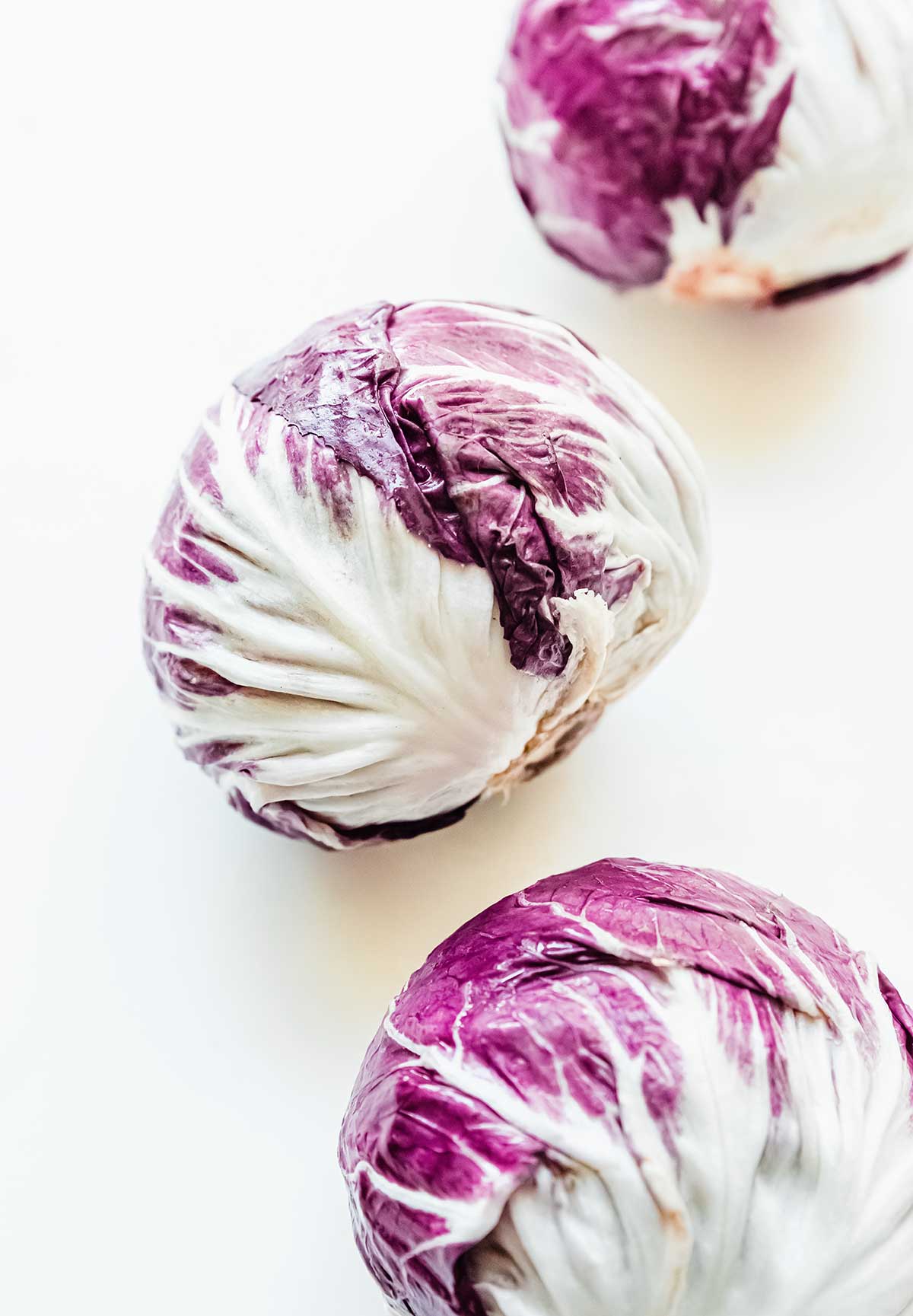
Nope, these aren’t photos of cabbage! Radicchio (pronounced “ruh-dee-key-o”) is a dark purple or red colored veggie that’s referred to as a lettuce, though it’s actually a chicory or endive.
The flavor is much different than lettuce and cabbage and tends to be bitter. You’ll find it in many Italian and Mediterranean dishes. You can eat it raw in a salad, or you can use it in cooked recipes like pasta or soup.
You’ll want to choose radicchio heads with bright and “firm” feeling leaves. Avoid wilted or soft heads for the best cooking results and flavor!
Types of Radicchio Lettuce
Radicchio is it’s own animal, coming in hot with more than 8 different variations! As you can see, it comes in a beautiful red endive version, but you’ll also find it in maroon, deep purple, bright green, or even brown. The different variations provide slightly different flavors, though you’ll find that all types maintain those bitter undertones.
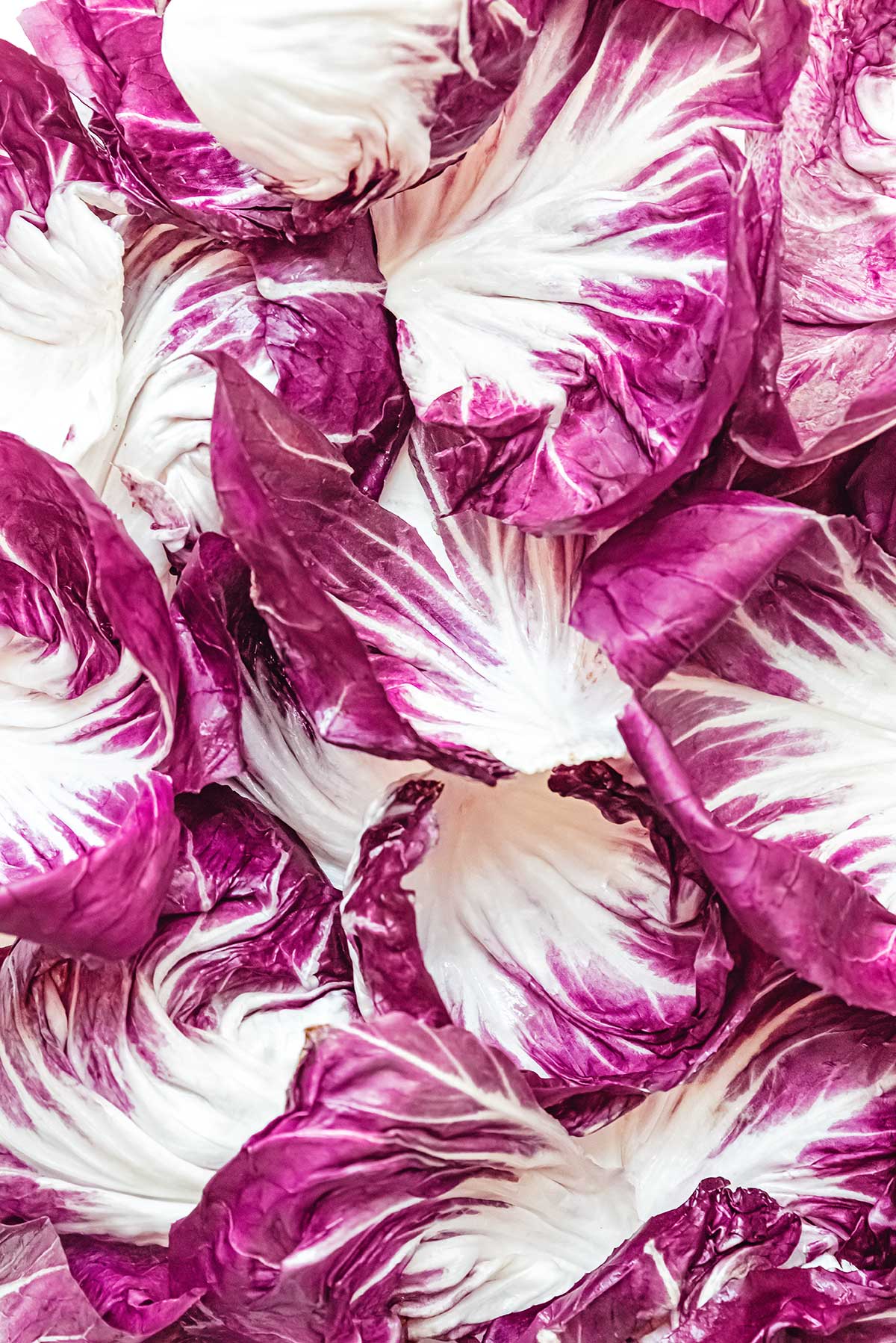
How to remove bitterness
Radicchio is great if you love bitter foods, but can taste overpowering if you don’t. So if that’s you, have no fear. There are plenty of ways to quite literally soak and cook the bitterness right out!
If you’d like to enjoy radicchio in a raw salad, you can soak the chopped pieces in water for about 10 minutes. This trick alone reduces the bitterness by a good amount! Another option is to use it in a cooked recipe by roasting, sautéing, or even grilling it, which all help to mellow out the bitter tones. And finally, pairing the bitter radicchio with opposite flavors – like salty or tangy – help to bring balance to this bitter veggie.
How to cut it Radicchio
The correct method for cutting radicchio lettuce will depend on the recipe you’re creating. But, no matter tonight’s menu, the process always begins with removing the stem.
- Start by removing any outer leaves that look wilted or undesirable.
- Next, cut the radicchio in half so that the stem is sliced in half lengthwise.
- From here, you can see the “V” shaped stem in the middle of each half. Remove it by cutting it out at an angle.
- Once the stem is removed, how you cut the remaining halves will depend on your recipe. If creating a wedge-style meal, cut into quarters. If grilling, separate the leaves. If using in a salad, cut the halves into slices like you would iceberg lettuce!
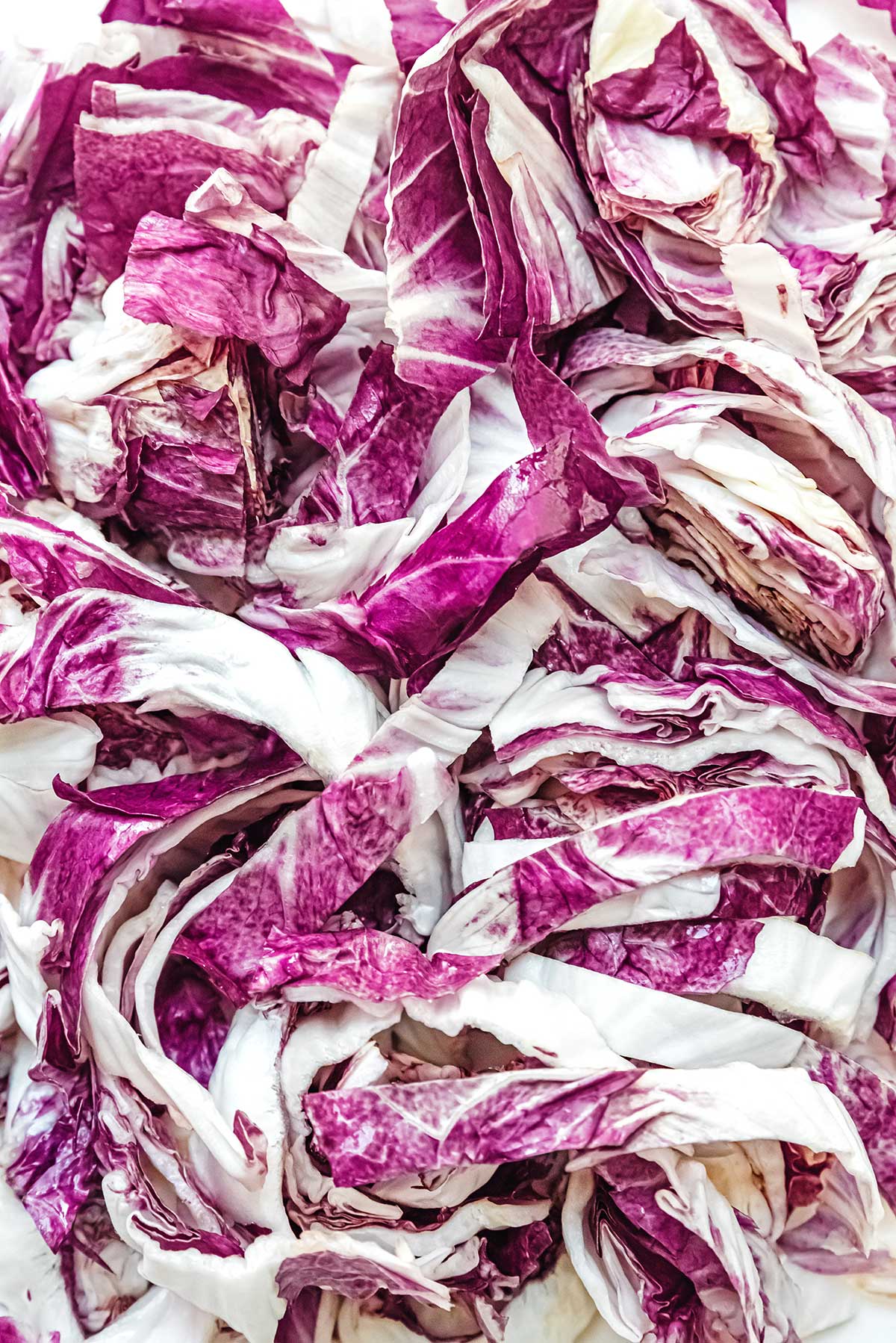
Radicchio Benefits
Radicchio is a nutrient-rich vegetable and is high in Vitamin K, fiber, zinc, and copper! It also contains a good amount of antioxidants, which is always a benefit for fighting off free radicals. Like other veggies, it’s low in calories and filled with many more vitamins, making it a great choice for incorporating into your favorite meals!
Ways to use Radicchio
Radicchio makes a great addition to salads. You can use it as the main leafy base or mix it with your favorite lettuce (like romaine or iceberg) for a more exciting dish!
You can also switch things up and try grilling or sautéing it. This method is great for eating the leaves as their own dish topped with balsamic or parmesan cheese (like we do in this Radicchio Pasta with Goat Cheese and Parm!)
You can also incorporate cooked radicchio into your favorite dishes like pasta, warm salads, orzo, or bean dishes. Try incorporating it into Shaved Brussels Sprout Salad, Grilled Broccoli Salad, or Vegetable Bolognese for added flavor.
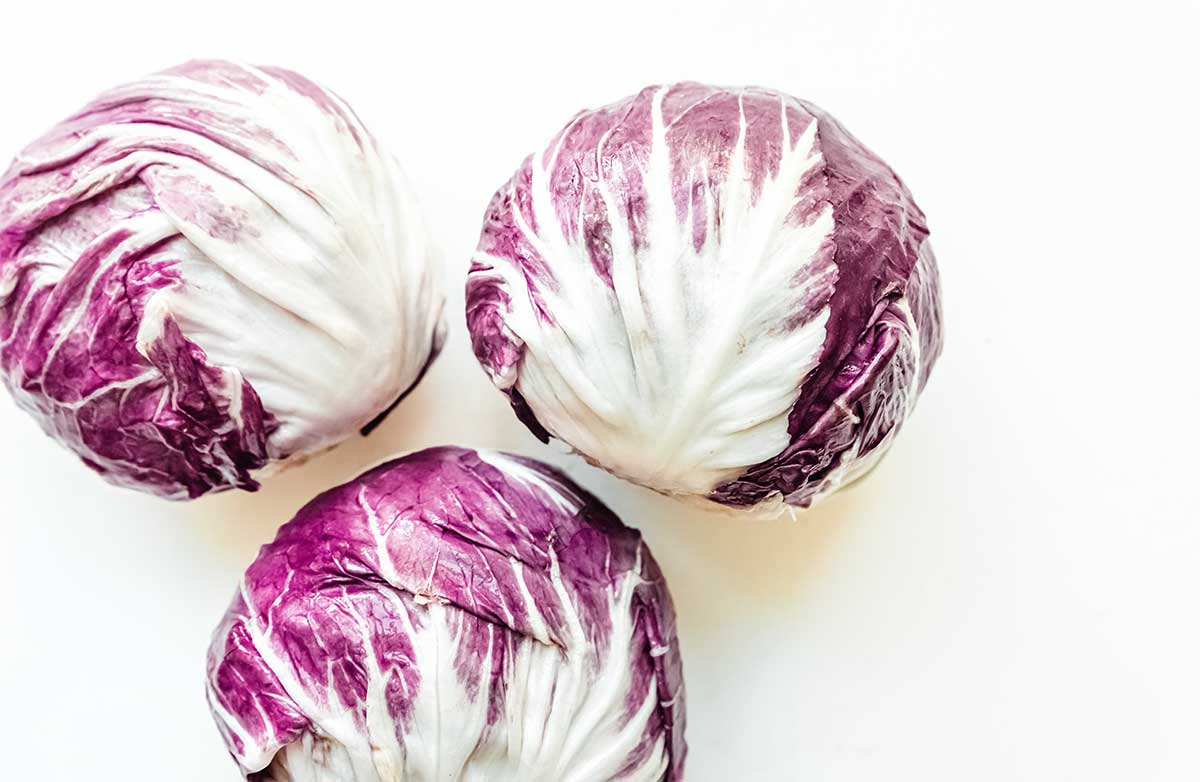
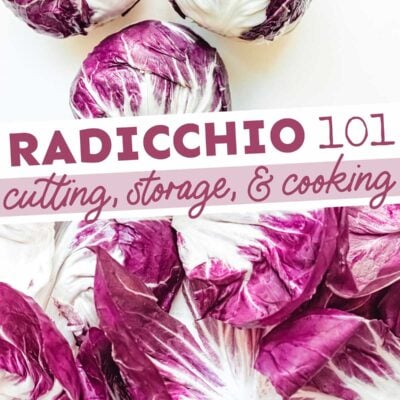
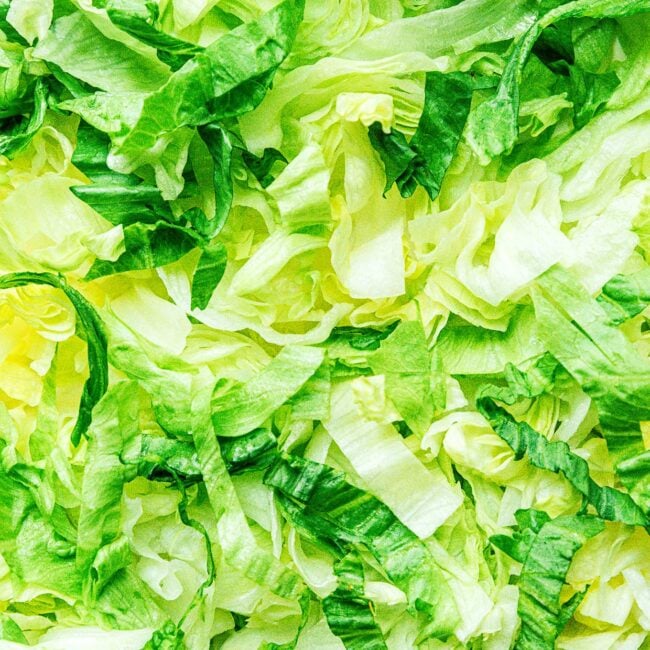
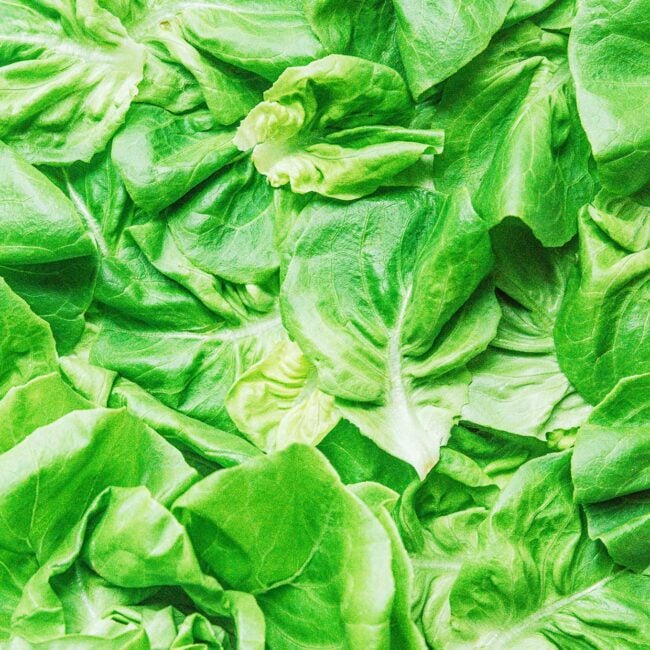
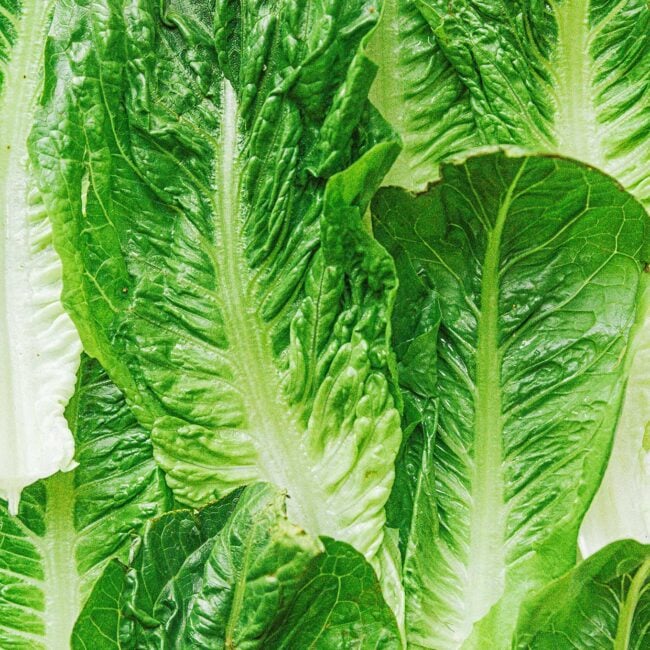

Anastasia Encarnacion says
Thank you Sarah. I had no idea what my CSA had delivered to me. I thought it was Napa cabbage (shows what I know). So glad to get the lowdown from you on how to cook it so it is not so bitter. Will be on the menu tonight with some Brussels sprouts.
ElaIne Robin says
I am growing radicchio in my greenhouse… a great place for lettuce fixings cause the bugs stay out. Glad to know of other ways to eat it. Thanks
Sarah Bond says
Oh how fun! Enjoy! 😀
clifford Cobb says
I just read online that radicchio has the highest concentration of luteolin of any food, about 8 times as much as the next highest food (green bell peppers). Luteolin may reduce microglia activity in the brain. My question is whether cooking or soaking radicchio has any effect on its luteolin content. Sometimes the most healthful elements in food are bitter, and this may be one of those cases. For those of us with a family history of dementia, a bit of bitterness in food seems a small price to pay to avoid that result.
Sarah Bond says
It may have an impact on it yes! But I wouldn’t think it would damage all of the luteolin in the radicchio.